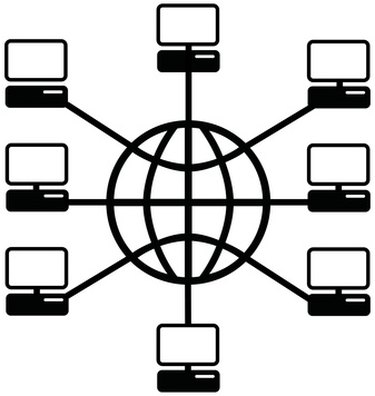
Since the concepts of interconnecting computers and sharing information through them were introduced, advancements have been made in almost every aspect of human life. These advancements came merely due to extensive study and exploration of fundamentals related to operations and functions of computers and network systems. This study of networking and computers has always remained at the heart of communication sciences and is still taught widely all around the world. The theory of network systems and computers only involves some fundamentals to be understood; based on these fundamentals, the entire global communication scenario is functioning and operating.
Principles
Video of the Day
Theoretical concept of computer networks states that a network is comprised of two or more identifiable interconnected nodes (computers). These nodes share information with each other through this interconnection in the form of data packets. These data packets travel through a medium (path), defining the route of access from one node to another. In this manner, the whole network is connected to another network, and the same process (with a few exceptions of security and privacy) goes over again.
Video of the Day
Functions
In order to initiate a communication session in a computer network, information needs to be transmitted from a point of origin (transmitter computer) towards a destination (receiver computer). At this stage, the shortest path to reach the destination and at what rate data should be transmitted has to be determined. Furthermore, this whole process requires the location address of the receiver, as well as of the transmitter. It is possible that the addressee's location might be in another network; therefore, an intermediate neutral link is established to transfer data bits from one network to another.
Architectures
The physical design or architecture of a computer network is known as its topology. In general, topology or architecture of a network defines how different nodes in a network are interconnected with each other, which usually depicts how data is transferred from one node to another in a network. There are multiple topologies of computer networks and each of them presents different hierarchies of data flow in a network. Some major network topologies include ring, mesh, bus, star and tree.
Types
According to theory, each type of a computer network defines its size, characteristics and functions. This idea clearly depicts that computer networks are classified according to their capacities and operational features. Major types of networks include LAN (local area network), MAN (metropolitan area network), WAN (wide area network) and PAN (personal area network). A network of networks, i.e. Internet, has evolved from the composition and interconnection of all these types of computer networks.
Media
The medium (link) interconnecting two nodes in computer networks can be a wire or air. Computer networks working on wired links are called wired networks, while those using air as their medium of communication are called wireless networks. In the domain of wired networks, different types of links such as coaxial, twisted pair and optical fiber are used. Similarly, in wireless networks, common links of communication are microwave, satellite and Bluetooth.